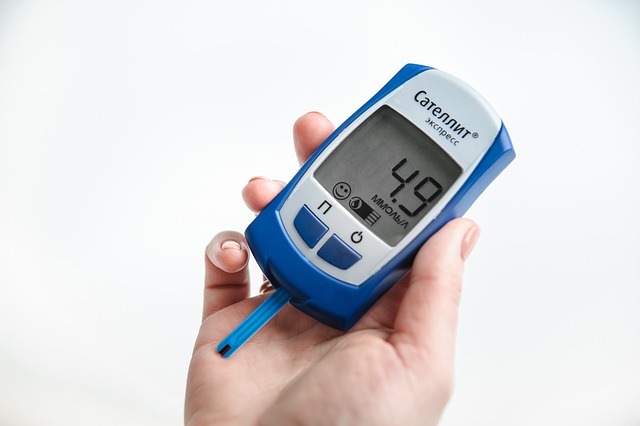Your blood sugar, or blood glucose, is an important measure of your health. Too much or too little is unhealthy. Normally, your body can control your blood glucose so that it stays within healthy levels, but your blood sugar goes awry in diabetes. It is often too high (hyperglycemia), and sometimes too low (hypoglycemia).
Blood glucose monitoring lets you know your blood glucose levels. You can get the most from it if you do it as many times a day as your doctor recommends, you use a high-quality glucose meter (glucometer), and you know how to interpret and respond to your blood glucose values.
Who Should Check Blood Glucose?
The American Diabetes Association (ADA) recommends self-monitoring of blood glucose, also known as SMBG, for many people with diabetes.[1] Your doctor may ask you to check your blood sugar at home if you have:

- Type 1 diabetes
- Type 2 diabetes and are on insulin
- Been unable to meet your blood sugar targets when you go to the doctor for a fasting blood sugar test or A1C test
- Or are experiencing low blood glucose levels, with or without symptoms.[2]
Why Should You Monitor Blood Glucose?
Monitoring your blood glucose can provide you with important information that you cannot get without the test. If you are on basal insulin, SMBG can guide you on dose or timing changes that may be necessary. According to Harvard-affiliated Joslin Diabetes Research Center, patients with diabetes can use blood glucose testing to find out:[3]
- Whether you may need changes in medication prescriptions.
- How your exercise and diet affect blood sugar levels.
- If you need to change your routine when you are sick.
- When you have hypoglycemia or hyperglycemia that requires action.
How to Check Your Blood Glucose
You can check your blood glucose with a simple home blood glucose meter, which also called a glucometer. There are a couple of main types of blood glucose monitoring devices: traditional and continuous.
1. A traditional blood glucose meter uses a blood sample that you get from a pricking your finger or another place on your body. Common times to test are:
- In the morning before breakfast
- Before or after meals
- Around bedtime
- Before and after exercising
How To Use The Glucometer
- Clean the site thoroughly and brush it with an alcohol swab.
- Turn on your glucometer, insert a test strip, and wait until the machine is ready for the blood sample.
- Prick the spot with a lancet, place the blood on the strip, and wait for the reading. Be sure to record it if you are not using an automatically synced digital glucometer.
2. Continuous glucose monitoring allows blood glucose levels to automatically be measured every 5 to 15 minutes. The ADA states that continuous glucose monitoring, also known as CGM, can be useful if you have type 1 diabetes or have trouble keeping blood sugar from being too high or low.[4]
You will get an alarm, likely on your smartphone or computer, if your sugar goes out of range. The device is stuck under your belly or arm skin. You will probably also need to test with a regular glucometer, too.
Accuracy of Your Test and What Can Affect Results
Are blood glucose test results accurate? Probably, as long as you have a high-quality glucometer that is functioning properly. The ADA recommends that glucometers be accurate within 5%.[5] That means that if your true blood sugar is 200 mg/dl, the error should be no more than 10 mg/dl; that is, your glucometer reading should if your blood glucose is 200 mg/dl.
You can take measures to increase the chances of accurate readings by knowing what affects the test. The FDA offers some guidance.[8]
- Quality of meter. Use a modern, highly-recommended meter.
- Quality of test strips. Be sure to store your strips properly between uses.
- Performing the test properly. Follow all of the instructions carefully.
- Factors in your blood. Having anemia or taking vitamin C or Tylenol can affect the results.
- Environmental factors. Read the glucometer and test strip informational inserts to learn how humidity, temperature, and altitude can alter results.
How to Make Sure Your Glucometer is Working Right[9]
You can do regular checks with the liquid control solution that comes with your glucometer or test strips to see if your glucometer is functioning properly. You also use the control solution when you open a new container of test strips, if you drop your glucose meter, and if you get unexpected results.
Your glucose meter might sometimes give you an error code after doing its electronic check. Follow the meter's instructions or look at the manual to see if you can troubleshoot the problem. Call the glucometer's manufacturer or number in the manual if you cannot figure out why you are getting an error code or how to fix it.
You can also go to a laboratory if you ever have doubts about whether your glucometer is performing correctly. Take your glucometer with you to your doctor's office or the lab where you get your blood glucose or other blood tests done. After asking your doctor or a lab technician to verify that you are using your glucometer properly, do a blood sugar test with your glucometer. Also get your blood sugar tested by the lab, and compare the results. The values from your glucometer and the lab should be the same.
Where to Check Your Blood Sugar
The tip of a finger is the traditional place to check. It is the most accurate place in your body to use because it responds quickly to changes in your blood glucose levels. You should use your fingers if you have just eaten or exercised, you may have hypoglycemia, or you are sick or stressed.[10]
Alternative site monitors let you test other sites, such as your arm, the palm of your hand, your calf, or your thigh. These are less painful to prick, but they are not as dependable if you are having a glycemic crisis.
Blood Glucose Target Ranges
Your blood glucose target ranges depend on many factors, including time of day and when you last ate. Your doctor can let you know your goal ranges, since individual factors are also important in determining targets.
These are some basic guidelines for blood sugar goals without and with diabetes.[11]
Situation Without Diabetes With Diabetes Fasting before breakfast
Less than 100 mg/dl
70-130 mg/dl
Before a non-breakfast meal or snack
Less than 110 mg/dl
70-130 mg/dl
Two hours after a meal
Less than 140 mg/dl
Less than 180 mg/dl
Bedtime
Less than 120 mg/dl
90-150 mg/dl
Your doctor might use A1C, or glycated hemoglobin, as a benchmark of your longer-term control. Normal A1C levels are under 5.7%, while a diabetes diagnosis can come at 6.4%. If you have diabetes, your target A1C to lower the risk of complications may be under 7%. An A1C value of 7% is equivalent to an estimated average glucose (eAG) of 154 mg/dl.
How to Understand Your Results
Blood glucose monitoring itself does not lower blood sugar. The way to lower blood sugar is to use the information you get from home testing and apply it as you make decisions about insulin, diet, and exercise.
You and your doctor or diabetes nurse can go over your past weeks' or months' blood glucose test results. At your regular appointments, you can discuss patterns and trends, and consider any adjustments to your care plan. Such appointments are likely to happen only a few times a year, though, and you can get additional benefits from getting daily feedback on your blood sugar results.
A digital diabetes health coach can provide many services to help you understand and use your results. Lark, for example, is a smartphone app that offers instant feedback when you take your blood glucose. Your Lark coach:
- Lets you know when you should call a medical professional based on a very high or low reading.
- May relate your blood sugar to recent exercise or diet patterns.
- Alerts you if you may need to test for ketones or recheck blood sugar.
- Offers suggestions for handling mild hypoglycemia.
In addition, Lark automatically stores your blood glucose test results so you can look at your progress and share the results with your doctor without needing to use pencil and paper to write them down each time you test.
Next Steps in Blood Sugar Monitoring

Congratulations on monitoring your blood sugar. Now‚ keep it up! It is important to keep tabs on your blood sugar levels. That way, you can be confident that you are hitting your target values and that your risk for diabetes complications stays low. Continuing to monitor also lets you detect problems early.
You have options if your blood glucose levels are not quite where you want them. Always keep your doctor and diabetes care team in the loop and consult with them if you have concerns about your blood glucose and before you make any changes.
Some strategies to lower blood glucose are:
- Adjusting insulin dose or timing if needed.
- Changing your oral diabetes medications and/or adding insulin if needed.
- Taking your medications properly if you have not been doing so.
- Increasing physical activity.
- Losing weight if you are obese.
- Eating healthier.
- Reducing stress.
- Getting adequate sleep.
These are easier said than done, and you may do better with support from a diabetes coach. A digital coach can be your cheerleader, teacher, and tracker, while reminding you to make those healthy choices each day.











.webp)






